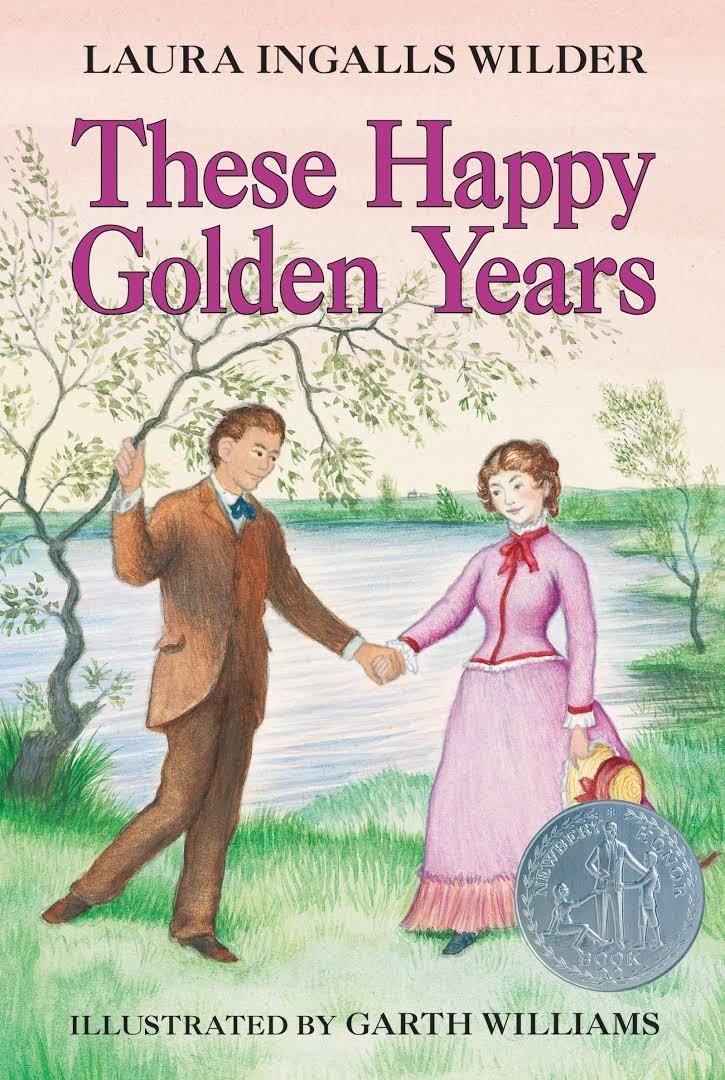8.4 /10 1 Votes8.4
Country United States Publisher Harper & Brothers Originally published 1943 | 4.2/5 Goodreads Series Little House Publication date March 17, 1943 Pages 299; 288 pp. | |||||||||||||||||||||||||||||||||
 | ||||||||||||||||||||||||||||||||||
Similar Laura Ingalls Wilder books, Little House on the Prairie books, Western books | ||||||||||||||||||||||||||||||||||
These happy golden years literary overview part 1
These Happy Golden Years is an autobiographical children's novel written by Laura Ingalls Wilder and published in 1943, the eight of nine books in her Little House series – although it originally ended the series. The story is based on Laura's later adolescence near De Smet, South Dakota, featuring her short time as a teacher, beginning at age 15, and her courtship with Almanzo Wilder. It spans the time period from 1882 to 1885, when Laura and Almanzo marry.
Contents
- These happy golden years literary overview part 1
- These happy golden years
- Plot summary
- Historical background
- Reception
- References
Golden Years was a Newbery Honor book in 1944, as had the previous four Little House books.
These happy golden years
Plot summary
As the story begins, Pa is taking Laura 12 miles from home in the dead of winter to her first teaching assignment at Brewster settlement. Laura, only 15 and a schoolgirl herself, is apprehensive as this is both the first time she has left home and the first school she has taught, but is determined to complete her assignment and earn $40 to help her sister Mary, who is at a college for the blind in Iowa.
The winter passes slowly. The weather is bitterly cold, though not so badly as the Hard Winter, and neither the claim shanty or the school house can be heated adequately. Some of the children Laura is teaching are older than Laura herself, and she has difficulty motivating them. With advice from Ma (a former schoolteacher herself), Laura is able to adapt and become more self-assured, and successfully completes the two-month assignment. Pa brings her the $40, and she gives it back to him to use for Mary's college education.
Though Laura believed she would not see Almanzo again after school ended, she happily accepts an invitation to go on a sleigh ride with him the next weekend, and so their relationship continues. Sleigh rides give way to buggy rides in the spring, and Laura impresses Almanzo with her willingness to help break his new and often temperamental horses.
Nellie's chatter and flirtatious behavior towards Almanzo annoy Laura, who flatly refuses to ride with Almanzo if he continues seeing Nellie. Shortly thereafter, Nellie moves back to New York after her family loses their homestead.
In between, Laura's Uncle Tom (Ma's brother) visits the family and tells of his failed venture with a covered wagon brigade seeking gold in the Black Hills, in which they built a stockade but were driven out of it by U.S. soldiers. Laura moves with seamstress Mrs. McKee to the McKees' claim when Mrs. McKee moves there to fulfill the residency requirements necessary to hold the claim. When Mary returns home for summer vacation, Mrs. McKee tells Laura she can go home.
Historical background
"Lew Brewster" was a pseudonym for Louis Bouchie. He was a distant relative of Mr. Boast, a good friend of the Ingalls who appears in several of the books. Bouchie and Genevieve Masters were the only two people whose names Laura changed for her books, as Nellie and Louis Bouchie's wife were both unpleasant people, and Laura wished to respect their privacy.
There is today a small town called Carthage, South Dakota, located where Laura placed the Brewster settlement, although it is unclear if Carthage grew out of the original Bouchie (Brewster) Settlement.
Nellie Oleson, depicted in this story, is actually a combination of two of Laura's rivals: Genevieve Masters, in the school passages, and Stella Gilbert, in the passages about the buggy rides with Laura and Almanzo. The news Laura hears near the end of the book, that "Nellie has gone back East", refers to Genevieve Masters.
Reception
Virginia Kirkus, Ingalls Wilder's first editor at Harper, approved the series conclusion in Kirkus Reviews as "a splendid addition to the other fine books in the series". The 3rd to 6th volumes had received starred reviews.
These Happy Golden Years joined the 4th to 7th volumes as Newbery Honor Books.
